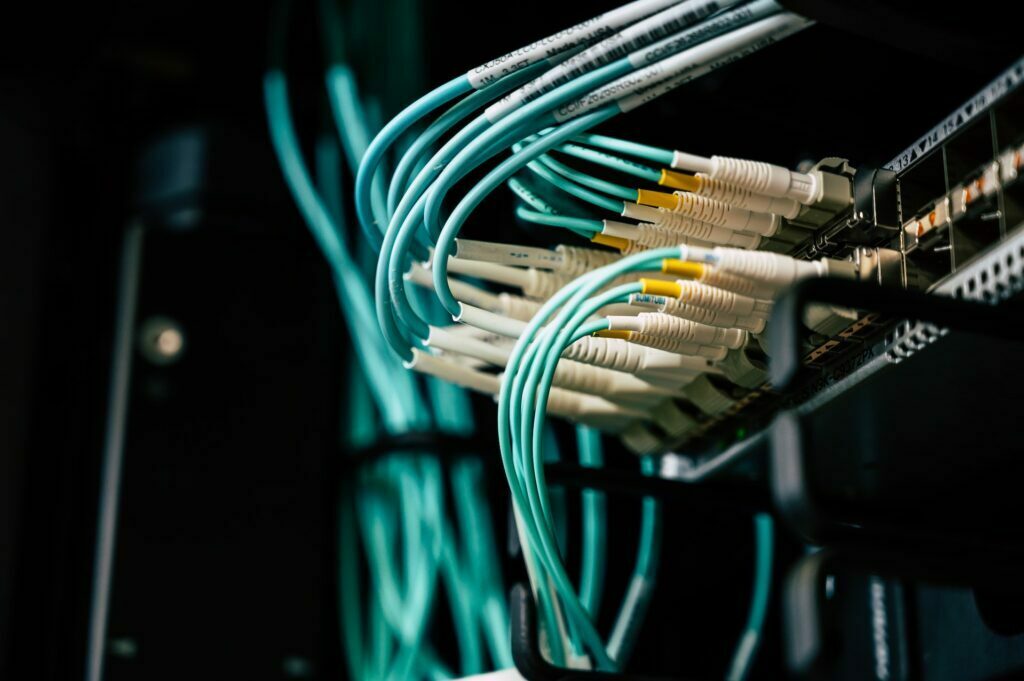Data Center Equipment: It takes lot of efforts and preparation to manage a data center effectively both now and in the future. There are few things that are a must, regardless of whether you are managing a cloud data center with hundreds of thousands of square feet of floor space or constructing a modest data center for your company’s computing hardware. To get you started, here are five kinds of data center equipment and some samples of each.
Equipment for Environmental Control
Make sure nothing gets too heated while operating a lot of computer hardware in one location. Additionally, this kind of machinery performs best when maintained at extremely certain humidity conditions. Simply maintaining the facility’s air conditioning is insufficient; you must be able to control the atmosphere as a whole by utilizing tools like:
Environmental Monitors – In order to keep track of the environment and enable your system to respond, it is essential to install sensors throughout the building that can measure the temperature and humidity.
Airflow Diagrams – If the airflow through your facility is not planned, you risk creating “hot spots” with wildly variable temperatures, which might damage equipment. Airflow may be controlled in a variety of methods, including air pressure, fans, and fan trays.
A humidifier – It’s a common misconception that any humidity in a data center is undesirable, but this is not the case. The optimal humidity range for most equipment is between 45% and 55%. When utilising air conditioners, this might be difficult, which is why humidifiers are required.
Powerful air-cooling systems are obviously necessary. These appliances might be water coolers, conventional air conditioners, or a variety of other things. Making sure the air-cooling systems can maintain the ideal temperature in the data center at all times is crucial.
Dishwasher Racks
Servers, routers, switches, telephone equipment, and other forms of computer hardware are all found in data centers. To use these things, you need more than just a desk or shelf. This is not only a wasteful use of space, but it might also lead to cooling issues, put people in danger, and compromise security.
In any data center, server racks are the best area to keep computer equipment. In fact, when most people think of data centers, they see server racks in their minds. The majority of people have seen images of large data centers with rows of server racks filled with gear and flashing lights. This is a realistic representation of how data centers securely hold and enable the operation of computer equipment valued at millions of dollars.
Multiple Power Sources
A data center’s equipment is largely powered by electricity. Although it begins with servers, routers, switches, and other IT hardware, this extends much further. Almost every piece of equipment in a building needs power to operate, including air handling and cooling systems, security cameras, and other equipment.
It not only needs a lot of power, but that electricity also has to be incredibly dependable. All the machinery shuts off if there is even a momentary power outage. After then, it takes a lot of support time to get everything back up. Power surges and interruptions may also harm the equipment, causing prolonged downtime and expensive repairs.
Nowadays, redundant power will often be provided via a two-layer system in data centers. The first component is a sizable battery backup system, sometimes known as an “uninterrupted power supply.” All of the energy is routed via this battery backup so that everything in the building will have access to electricity even if the commercial power goes out for a split second.
These batteries generally only provide a data center with electricity for a brief period of time (5-20 minutes in most cases). Large generators will start up and start giving the required electricity after the commercial power is turned off and the batteries start to power the facility. This often takes the shape of big, diesel-powered generators at facilities. As long as the diesel fuel tanks can be refilled, these generators can provide steady electricity for whatever length is required.
Supplying Cable Management
Anyone who has ever worked in a data center without an organised cable management plan is familiar with the mess that wires create. Cable management equipment must be installed in a data center before any other equipment is added.
Simple tools like zip ties that keep wires in place are a good place to start. Additionally, purchasing coloured cables will make it simpler to quickly distinguish between various cable kinds. It is essential to have suitable cable management kits in server racks to keep the wires neatly arranged.

It will be simpler to test and repair cables if they break if the cables are routed either up to the top of the server rack or down through the bottom. This will also keep the wires safer, reducing the likelihood of an outage. A well-executed cable management strategy in a data center is comparable to a work of art and significantly enhances the efficiency of the whole facility.
Computer and network hardware
It may seem strange to include this last since data centers are designed to contain computer and networking equipment. However, if you have the luxury of designing a data center from scratch, the computer and network equipment are really the last things you need to think about.
You will be able to add almost any sort of computer, switch, router, server, telecom equipment, mainframe, and more with no problems if you carefully plan and implement everything indicated above.
The lifetime management of any piece of equipment determines how often it is changed. While server racks, air management and cooling equipment, and other things might survive for decades without experiencing any issues, the actual IT components are usually updated every three to five years.

Kunal Aneja is the Head of DataBonker.com, leading the platform’s vision to provide informational and educational resources on Education, Career, Jobs, Data Analytics, Cloud Computing, AI, and Technology. With a deep passion for knowledge-sharing and innovation, Kunal is dedicated to delivering insightful, research-driven content that helps individuals navigate their professional and academic journeys. Under his leadership, DataBonker continues to evolve as a trusted hub for learning resources, career guidance, and tech insights.
📩 **Stay Ahead with DataBonker!**
Join our newsletter and get the latest insights on "Education, Admissions Guidance, Career Growth, Latest Job Trends, and Technology Updates** – straight to your inbox! 🚀
